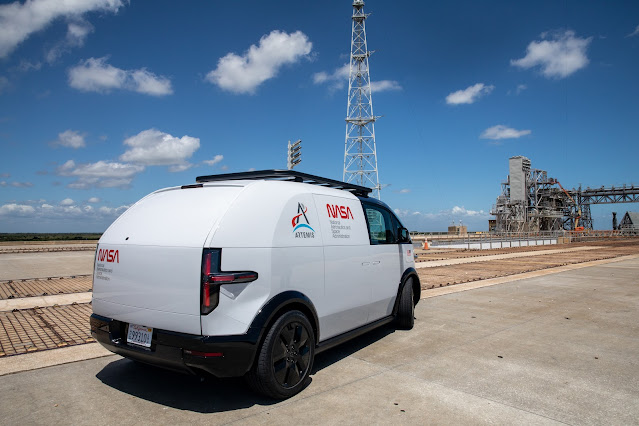NASA's Mars Curiosity Rover Landscape Panorama | JPL
This newly-processed panorama was originally captured by NASA's Mars Curiosity rover on Sol 1099 on September 9, 2015. The rover landed on Mars in August 2012.
Curiosity Rover Update: Sols 3493-3495
"Everywhere you look in the Navcam mosaic (above) there's something interesting to see!
We're up close to a nifty layered outcrop, which is getting lots of imaging including ChemCam LIBS on targets 'Rukumata' and 'Guarico,' a ChemCam mosaic on 'Kamakusa,' MAHLI dogs-eye imaging of 'Tabaco' and the DRT location 'Issano,' which will also have APXS on it.
Mastcam will also be imaging Issano pre- and post-DRT for comparison, and taking a mosaic of the outcrop as a whole. Off the outcrop, ChemCam is also doing LIBS on 'Sisipelin,' which Mastcam will also image, and ChemCam and Mastcam are both taking mosaics further afield towards the Gediz Vallis Ridge.
I . . . was very excited to see the great view we have of the north crater rim, especially since we've been spending so much time recently in among lots of terrain blocking this view. Imaging the crater rim can help us to characterise the amount of dust in the atmosphere, which is especially important in the dusty season.
Aside from the crater rim observations, we are also trying to catch dust devils with a dust devil survey and movie, keeping an eye on the clouds with a few cloud movies, and taking Mastcam tau observations as an additional way to quantify the amount of dust in the atmosphere.
After this marathon of observations, we'll drive about 30 m further and finish up the weekend with a morning ENV block with our weekly AM cloud and dust observations."
Caption Credit: Alex Innanen/JPL
Release Date: June 7, 2022
Mission Name: Mars Science Laboratory (MSL)
Rover Name: Curiosity
Main Job: To determine if Mars was ever habitable to microbial life.
Launch: November 6, 2011
Landing: August 5, 2012, Gale Crater, Mars
For more information on NASA's Mars missions, visit mars.nasa.gov
Image Credit: NASA/JPL-Caltech/MSSS/Kevin M. Gill
Release Date: June 13, 2022
#NASA #Space #Astronomy #Science #Mars #RedPlanet #Planet #Astrobiology #Geology #Crater #MountSharp #GaleCrater #Curiosity #Rover #Robotics #Technology #Engineering #JPL #Pasadena #California #UnitedStates #JourneyToMars #CitizenScience #STEM #Education
RD.png)



.jpg)




2di7%20&%20titanio44.png)
.png)
.png)
.jpg)





.jpg)
.jpg)

.jpg)












